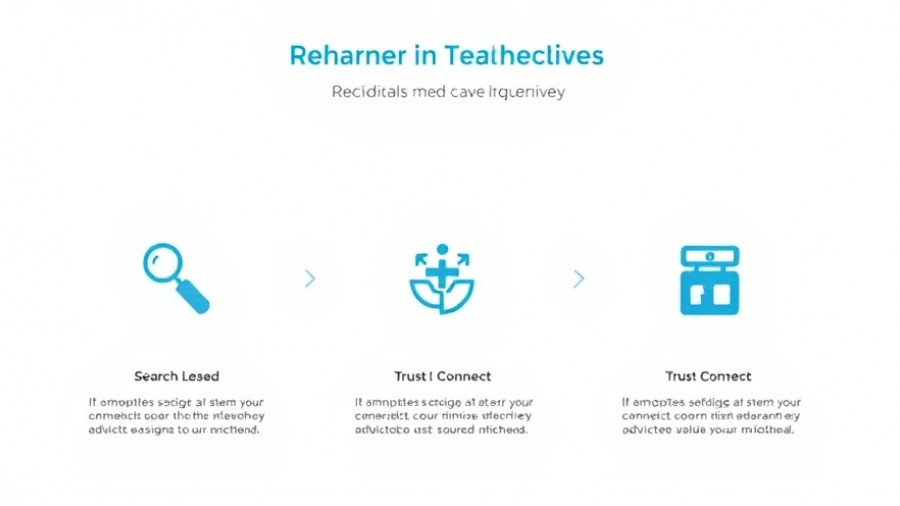
Understanding Competitive Intelligence: The Key to Business Success
Competitive intelligence (CI) is more than just watching what your competitors are doing; it is about gathering vital information that can influence your business strategy. It empowers businesses to meet customer needs effectively, spot new opportunities early, and outsmart rivals in a competitive marketplace. For professionals and business owners eager to maintain a competitive edge, understanding and leveraging CI can lead to significant improvements in strategic decision-making and market positioning.
The Four Phases of Competitive Intelligence Research
Establishing a competitive intelligence strategy involves a structured approach. Here are the essential phases every professional should consider:
1. Planning and Direction
Begin by identifying what specific information you need about your competitors and market trends. It is crucial to define your objectives and what you hope to achieve from implementing CI. This stage lays the groundwork for the research process, ensuring that your efforts align with your overall business goals.
2. Collection
The next step involves gathering data from a variety of sources including competitors’ websites, customer reviews, social media platforms, and industry reports. Tools like SEMrush can assist in conducting thorough analyses, allowing for a comprehensive view of your competitive landscape.
3. Analysis
Once data is collected, the analysis phase begins. Analyzing competitor strengths and weaknesses helps identify opportunities for your own business. This step combines quantitative metrics and qualitative insights, transforming raw data into actionable intelligence. The insights gained can help decision-makers understand competitors' strategies and motivations.
4. Dissemination and Action
Finally, it is essential to communicate the collected insights across teams effectively. Share reports and actionable insights with stakeholders to influence strategic planning. For instance, the marketing agency Thrive increased their win rate by 35% through strategic insights derived from their CI efforts, illustrating the potential of informed decision-making.
Real-World Case Study: Thrive's Success
Thrive serves as a pertinent example of how competitive intelligence can drive business success. Faced with the challenge of AI marketing tools outpacing traditional agencies, Thrive conducted competitor social media analysis and customer review assessments. They found that clients felt a lack of personal touch with AI strategies. Consequently, they implemented “Transparent Strategy Sessions,” blending AI efficiency with human oversight, showcasing the importance of addressing customer sentiments directly.
Future Predictions: The Rising Importance of CI
As business landscapes evolve rapidly, the need for competitive intelligence is expected to grow. Businesses that invest in solid CI frameworks will likely outperform their peers by becoming more agile and responsive to market changes. With advancements in technology, tools will enable professionals to gather data more efficiently and analyze it in real-time, leading to quicker decision-making processes and increased competitive advantages.
Emotional and Human Interest Angle
Ultimately, competitive intelligence is about understanding people—customers, competitors, and the market at large. The ability to empathize and connect with customers’ needs allows businesses to offer solutions that resonate on a personal level. This connection can foster long-term loyalty and transform mere transactions into lasting relationships.
Overcoming Common Misconceptions about Competitive Intelligence
There are misunderstandings about CI being solely about spying on competitors. In reality, CI is about creating a holistic approach that focuses on ethical data collection and analysis to drive positive business outcomes. By reframing CI as a valuable tool for strategic growth rather than merely an intelligence-gathering mission, businesses can unlock its true potential.
Tips for Implementing a Competitive Intelligence Framework
Establishing a successful CI framework demands dedication. Here are a few tips to get started:
- Be Consistent: Regularly review your CI strategies and the competitive landscape to stay informed.
- Utilize Technology: Leverage digital tools and software for effective data collection and analysis.
- Foster Team Collaboration: Encourage cross-departmental sharing of CI insights to align company-wide strategies.
Conclusion
For modern professionals and business owners, understanding competitive intelligence can unlock new pathways to success. By knowing your competition, the market, and your customers intimately, you position yourself to make smarter strategic decisions that drive business growth. By implementing a comprehensive CI strategy, you not only respond to challenges effectively but also seize opportunities to lead in your industry.
 Add Row
Add Row  Add
Add 




Write A Comment